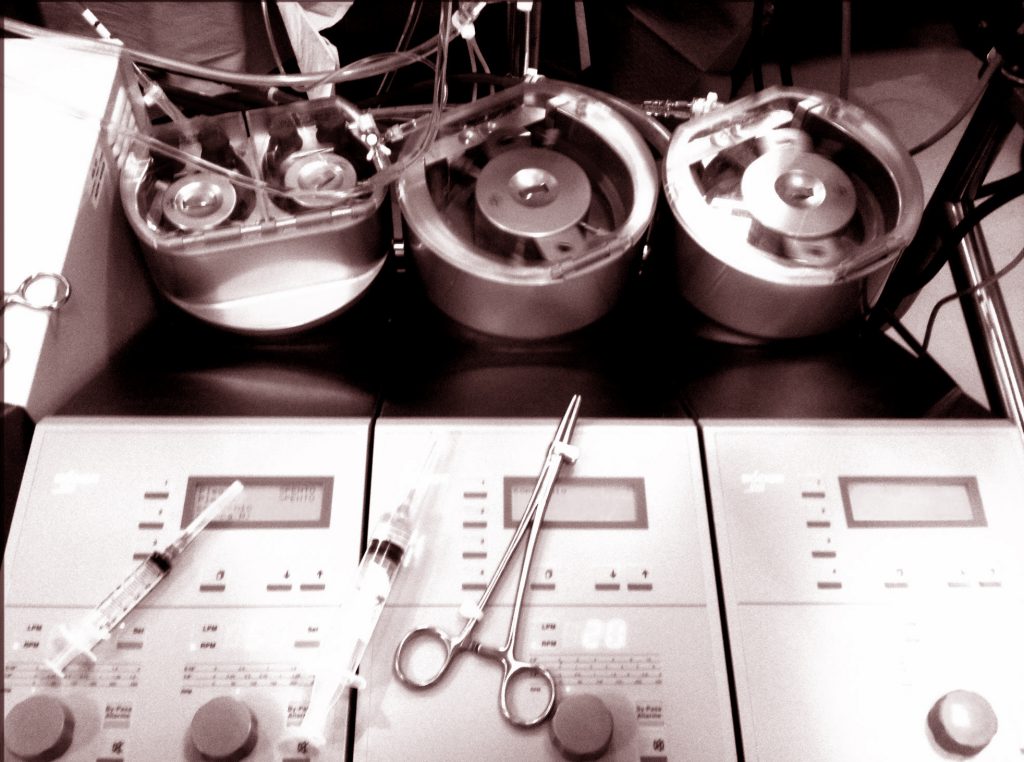Impact of Minimal Invasive Extracorporeal Circulation on Perioperative Intravenous Fluid Management in Coronary Artery Bypass Surgery

Objective
Compare the use of blood products and intravenous fluid management in patients scheduled for coronary artery bypass surgery and randomized to minimal invasive extracorporeal circulation (MiECC) and conventional extracorporeal circulation (CECC).
Methods
A total of 240 patients who were scheduled for their first on-pump CABG, were randomized to MiECC or CECC groups. The study period was the first 84 hours after surgery. Hemoglobin <80 g/l was used as transfusion trigger.
Results
Red blood cell transfusions intraoperatively were given less often in the MiECC group (23.3% vs 9.2%, p = 0.005) and the total intravenous fluid intake was significantly lower in the MiECC group (3300 ml [2950–4000] vs 4800 ml [4000–5500], p < 0.001). Hemoglobin drop also was lower in the MiECC group (35.5 ± 8.9 g/l vs 50.7 ± 9 g/l, p < 0.001) as was hemoglobin drop percent (25.3 ± 6% vs 35.3 ± 5.9%, p < 0.001). Chest tube drainage output was higher in the MiECC group (645 ml [500–917.5] vs 550 ml [412.5–750], p = 0.001). Particularly, chest tube drainage in up to 600 ml category, was in benefit of CECC group (59.1% vs 40.8%, p = 0.003). ROC curve analysis showed that patients with hemoglobin level below 95 g/l upon arrival to intensive care unit was associated with increased risk of developing postoperative atrial fibrillation (POAF) (p = 0.002, auc = 0.61, cutoff <95, sensitivity = 0.47, positive predictive value = 0.64).
Conclusion
MiECC reduced the intraoperative need for RBC transfusion and intravenous fluids compared to the CECC group, also reducing hemoglobin drop compared to the CECC group in CABG surgery patients. Postoperative hemoglobin drop was a predictor of POAF.
